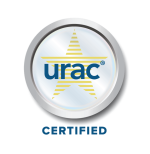Acute and chronic diseases are two different types of health conditions that have distinct characteristics and require different approaches to diagnosis and treatment. Understanding the difference between chronic and acute illnesses is important for patients who want to better manage their health.
In addition, it is worth noting that both acute and chronic diseases are reimbursable through the Current Procedural Terminology (CPT) codes, which are used to report medical procedures and services to insurance providers for reimbursement. Healthcare providers use different CPT codes to bill for their services related to acute and chronic conditions, depending on the type of care provided and the duration of the illness.
In this comprehensive guide, we will explore the key differences between acute and chronic illnesses and the role of remote patient monitoring (RPM) in managing these conditions.
What is an Acute Disease?
An acute disease is a health condition that is sudden and severe onset and typically requires immediate medical attention. Some common examples of acute illnesses include the flu, the common cold, pneumonia, appendicitis, and urinary tract infections. Acute diseases are often characterized by distinct symptoms that distinguish them from chronic illnesses and require urgent or short-term care.
Managing acute diseases is crucial for ensuring a full recovery. This may involve receiving prompt medical intervention, such as treatment for a broken bone or an asthma attack or receiving a proper treatment plan for illnesses like the flu or influenza. With the right care, many acute illnesses can be treated effectively, allowing patients to make a full recovery.
What is Chronic Disease?
A chronic disease is a long-lasting health condition that cannot be cured and requires ongoing care and management. Unlike acute conditions, which are usually short-lived and have a distinct onset and set of symptoms, chronic diseases develop gradually over time and are caused by many different factors, including genetics, lifestyle choices, and environmental factors like air pollution and secondhand smoke.
Some common examples of chronic illnesses include high blood pressure, diabetes, heart disease, kidney disease, and arthritis. These chronic health conditions are characterized by symptoms that may be mild or severe but are not as sudden in onset as with acute diseases. Chronic diseases are not curable, and people who suffer from them may experience symptoms like fatigue, stiffness, and frequent urination for the rest of their lives. However, with proper treatment and self-management, it is possible to help improve symptoms and overall health for those living with chronic illnesses.
Differences between Acute and Chronic Diseases
Based on Duration
The main difference between chronic and acute diseases is their duration. Acute illnesses are usually short-term and soon recover, while chronic conditions require ongoing care and management.
Based on Symptoms
Acute conditions are severe and sudden onset and are accompanied by distinct symptoms that require urgent or short-term care. Chronic conditions develop over time and are accompanied by distinct symptoms that may be more gradual in onset, but still require ongoing care.
Based on Treatment options
Many acute illnesses can be easily diagnosed and treated with medical intervention. Chronic conditions are often more complicated in nature and require a more comprehensive treatment plan, including lifestyle changes and self-management. Cures are not always possible for chronic conditions, but treatment can help improve symptoms and overall health.
The Role of DrKumo Remote Patient Monitoring in Acute and Chronic Illnesses
DrKumo offers a cutting-edge RPM solution, especially for those suffering from chronic illnesses and acute. The complicated nature of these conditions can be overwhelming, but with DrKumo, patients can manage their health from the comfort of their own homes. The platform provides real-time, continuous monitoring, allowing healthcare providers to intervene in a timely manner.
DrKumo’s user-friendly system is powered by advanced, HIPAA-compliant, mobile-enabled, and AI/ML technology, making it easier for patients to track their symptoms and communicate with their healthcare provider. This can lead to improved medical intervention, as patients can share information about their symptoms over time. In some cases, the symptoms may go away with time or be treatable, such as in some heart conditions, and DrKumo RPM technology solutions can help monitor progress and ensure timely intervention.
With DrKumo, patients with acute or chronic illnesses can benefit from increased accessibility to quality care. DrKumo is committed to revolutionizing healthcare and helping people live happier and healthier lives, even with the complications that come with acute and chronic illnesses.
Takeaways
Understanding the difference between acute and chronic conditions is crucial in order to determine the right approach to diagnosis and treatment. RPM can be a highly effective tool for managing both types of conditions by allowing real-time, continuous monitoring and easy communication between patients and healthcare providers. This leads to improved treatment and care, as well as better symptom tracking, and increased accessibility for patients with mobility limitations. Moreover, the CPT codes for RPM cover both acute and chronic conditions, which makes it a versatile and reimbursable tool for healthcare providers to manage a wide range of conditions.
Take control of your health with DrKumo RPM technology. Contact DrKumo now to experience improved diagnosis and treatment from the comfort of your own home.









